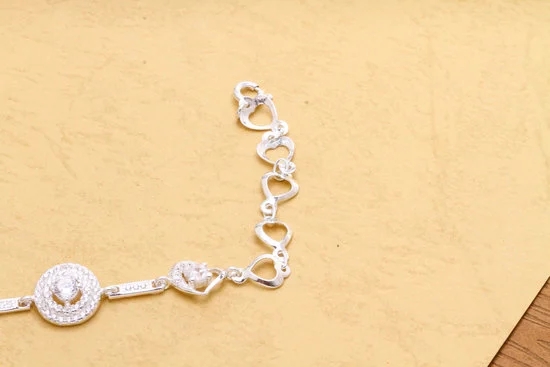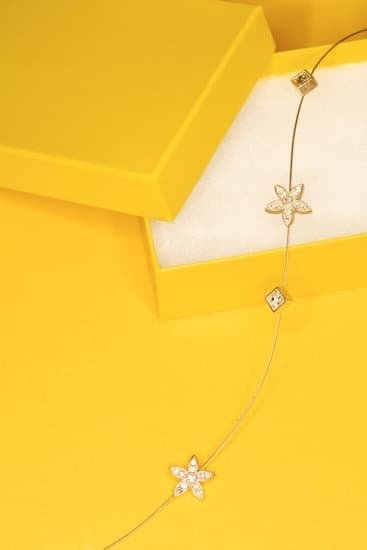Starting your own diamond jewelry business can be an exciting and profitable venture. The world of diamond jewelry is filled with endless possibilities, as people have always had a fascination and desire for these exquisite gems. However, entering this industry requires more than just a love for diamonds. It demands passion, knowledge, dedication, and careful planning to ensure success.
The diamond jewelry business holds immense potential for entrepreneurs who are willing to put in the effort. The allure of dazzling diamonds combined with the sentimentality and luxury associated with jewelry make it a highly lucrative market. Whether you want to cater to high-end clientele or create affordable yet beautiful pieces for a wider audience, there is room for everyone in this industry.
To embark on your journey into the world of diamond jewelry business, you need more than just a desire to sell sparkly gemstones. Understanding the intricacies of the diamond industry is crucial. This beginner’s guide will walk you through the basics – from different types of diamonds and their quality attributes to grading systems and certifications that help determine their value.
In addition to understanding diamonds themselves, it’s equally important to conduct comprehensive market research before setting up your business. Identifying your target audience and evaluating existing competitors will guide your decision-making process and help carve out your niche in the market. By catering to specific customer preferences or specializing in unique designs, you can strategically position your brand for success.
Starting a diamond jewelry business requires thorough preparation and industry knowledge. By following this guide, you will gain insights into crafting a detailed business plan, navigating legal requirements, sourcing diamonds from reliable suppliers at competitive prices, designing exceptional pieces with expert craftsmanship, marketing your brand effectively online and offline, nurturing customer relationships through excellent service, expanding your business as it grows, and much more.
Your journey into the world of diamond jewelry begins now – so buckle up and get ready to shine in one of the most rewarding industries out there.
Understanding the Diamond Industry
The diamond industry can be complex and overwhelming, especially for beginners. Understanding the basics of the diamond industry is crucial in starting your own diamond jewelry business. This section will provide you with a beginner’s guide to navigating the diamond industry and key factors to consider when dealing with diamonds.
Firstly, it is essential to understand the different types of diamonds available in the market. Diamonds come in various shapes, sizes, colors, and clarity grades. The most common shapes are round, princess, cushion, and emerald-cut.
Additionally, diamonds can be categorized based on their color grading ranging from D (colorless) to Z (light yellow or brown). Clarity refers to the presence of internal flaws or external blemishes in a diamond that affects its overall brilliance. Familiarizing yourself with these different aspects will enable you to make informed decisions when sourcing diamonds for your jewelry business.
Quality is another important factor to consider in the diamond industry. The quality of a diamond is determined by four factors commonly known as the 4Cs: carat weight, cut grade, color grade, and clarity grade. The carat weight refers to the size of the diamond, while cut grade assesses how well a diamond has been cut and shaped.
Color grade evaluates the absence of any color in a diamond, with higher grades indicating greater colorlessness. Lastly, clarity grade examines any internal or external flaws present in a diamond.
In addition to understanding basic terminology related to diamonds, it is crucial for beginners to learn about certifications and grading systems used in the industry. Certifications from reputable gemological laboratories such as GIA (Gemological Institute of America) provide valuable information about a diamond’s authenticity and quality. These certifications assure customers that they are purchasing genuine diamonds that have been accurately graded.
| Aspect | Key Information |
|---|---|
| Diamond Types | Various shapes, sizes, colors, and clarity grades |
| Quality (4Cs) | Carat weight, cut grade, color grade, and clarity grade |
| Certifications | GIA certification ensures authenticity and accurate grading |
Market Research
Before starting your own diamond jewelry business, conducting thorough market research is essential to ensure that you understand the demand and competition within the industry. This section will guide you on how to identify your target audience and competitors effectively.
1. Conducting Market Research:
To begin with, start by researching the overall diamond jewelry market and its current trends. Look for data on consumer preferences, buying patterns, and emerging market segments. Utilize industry reports and studies, analyze online forums and communities, and even consider attending trade shows or conferences related to jewelry. By gathering valuable insights from these sources, you can better understand the needs of your potential customers.
2. Identifying Your Target Audience:
While the diamond jewelry market may seem broad at first glance, it’s crucial to narrow down your focus by identifying specific target audiences within this industry. Consider factors such as age group, income level, lifestyle preferences, and purchasing power. For example:
- Young couples: Targeting engaged couples or newlyweds who are shopping for engagement rings or wedding bands.
- High-end luxury consumers: Catering to customers who have a high disposable income and are willing to invest in premium diamond jewelry pieces.
- Fashion-conscious individuals: Creating trendy designs that appeal to individuals who value style and want unique statement pieces.
By understanding who your ideal customers are, you can tailor your product offerings and marketing strategies specifically towards their needs.
3. Analyzing Competitors:
In addition to identifying your target audience, it is vital to research and analyze your competitors within the diamond jewelry market. Look for both local and international players in the industry who offer similar products or cater to a similar audience. Study their pricing strategies, marketing tactics, customer service standards, and unique selling points (USPs).
Compile a list of direct competitors along with their strengths and weaknesses. This analysis will not only help you understand what sets you apart but also provide insights on potential gaps in the market that you can capitalize on. By conducting thorough research on your competitors, you can position your brand effectively and differentiate yourself from the competition.
Crafting Your Business Plan
Crafting a detailed business plan is essential when starting a diamond jewelry business. This plan serves as the foundation for your business and sets you up for success. It provides a roadmap that outlines your goals, strategies, and financial projections, helping you make informed decisions throughout your entrepreneurial journey in the diamond jewelry industry.
One key element to include in your business plan is budgeting. Determine how much capital you will need to start and run your business effectively. Consider expenses such as sourcing diamonds, purchasing equipment, marketing efforts, staffing costs, and overhead expenses. Having a clear understanding of your financial needs will help you secure funding from investors or lenders if necessary.
Another crucial aspect to consider in your business plan is sourcing diamonds. Research various options available to you, including wholesalers, auctions, and mining companies. Evaluate each option based on factors such as price competitiveness, reliability of suppliers, and ethical sourcing practices. Building strong relationships with reliable diamond suppliers is essential for ensuring consistent quality and competitive pricing.
Pricing strategy should also be included in your business plan. Determine how you will price your diamond jewelry products to attract customers while maintaining profitability. Consider market prices, competitor pricing strategies, and the value proposition of your products. Understanding the balance between affordability for customers and profitability for your business is vital.
Marketing tactics are another critical component of your business plan. Identify how you will promote your diamond jewelry brand and reach your target audience effectively. Explore various marketing channels such as social media platforms, online advertising, influencer collaborations, and traditional advertising methods like print media or TV advertisements if applicable to increase brand visibility.
Including these elements in your business plan will set you up for success when starting a diamond jewelry business. With a well-crafted plan in place, you can navigate the challenges of the industry more effectively while maximizing opportunities for growth and profitability.
| Element | Description |
|---|---|
| Budgeting | Determining capital needs and expenses for starting and running the business. |
| Sourcing Diamonds | Evaluating options and building relationships with reliable diamond suppliers. |
| Pricing Strategy | Determining how to price products competitively while maintaining profitability. |
| Marketing Tactics | Identifying strategies and channels to promote the brand and reach the target audience. |
Legalities and Regulations
Starting a diamond jewelry business requires navigating various legalities and regulations within the industry. It is essential to have a clear understanding of the legal requirements and ensure compliance to operate your business smoothly. This section will provide insights into the legal aspects that you need to consider.
Firstly, it is crucial to research and understand the specific laws and regulations governing the diamond jewelry industry in your country or region. These regulations may include licensing requirements, certifications, and permits needed to legally sell diamonds and jewelry. Familiarize yourself with any restrictions on sourcing, manufacturing, or selling certain types of diamonds or jewelry.
One key aspect of legality in the diamond jewelry industry is ensuring that all diamonds are ethically sourced. Ethical sourcing means diamonds are obtained using responsible practices that do not support conflict or illegal activities. As a responsible business owner, it is essential to choose suppliers who adhere to ethical standards and can provide proof of their sourcing practices.
In addition to ethical sourcing, complying with trade regulations and international agreements is crucial, especially if you plan on importing or exporting diamonds. The Kimberley Process Certification Scheme (KPCS) is an international initiative that aims to prevent conflict diamonds from entering the legitimate supply chain. Familiarize yourself with this process if you plan on dealing with rough diamonds.
Obtaining necessary permits, licenses, and certifications should be a priority when starting your diamond jewelry business. These requirements may vary depending on your location, so it is recommended to consult legal professionals or relevant government agencies for specific guidance.
Ensuring compliance with legalities and regulations not only protects your business but also builds trust among customers who value transparency and ethical practices in the diamond jewelry industry.
| Legal Considerations | Details |
|---|---|
| Licensing requirements | Research and obtain any necessary licenses needed to legally sell diamonds and jewelry. |
| Ethical sourcing | Choose suppliers who adhere to ethical sourcing practices to ensure your diamonds are responsibly obtained. |
| Kimberley Process Certification Scheme (KPCS) | Familiarize yourself with international agreements like KPCS if you plan on dealing with rough diamonds. |
| Import/export regulations | Understand the trade regulations and requirements for importing or exporting diamonds, if applicable. |
Sourcing Diamonds
One of the key aspects of starting a successful diamond jewelry business is sourcing high-quality diamonds. Building strong relationships with reliable suppliers is essential for ensuring that you have access to the best diamonds at competitive prices. Here are some options to consider when sourcing diamonds for your business:
- Wholesalers: Working with wholesale diamond suppliers can be a cost-effective option as they often offer bulk pricing and a wide range of diamond options. Look for wholesalers who are reputable, well-established, and have a good track record in the industry.
- Auctions: Attending diamond auctions can provide an opportunity to source unique and rare diamonds. Keep an eye on auction listings and research the reputation of auction houses to ensure credibility.
- Mining Companies: Establishing direct relationships with mining companies can give you access to rough or uncut diamonds. This allows you to oversee the entire process from sourcing to cutting and polishing, giving you more control over the quality and authenticity of your diamonds.
Once you have identified potential suppliers, it’s important to build strong relationships with them. This includes effective communication, trust-building, and negotiating competitive prices. Maintaining a good rapport with your suppliers can also result in preferential treatment, exclusive deals, and access to limited edition or unique stones.
In addition to building relationships with diamond suppliers, it’s also beneficial to stay updated on industry trends and attend trade shows or exhibitions where you can network with potential suppliers. By establishing multiple sources for your diamonds, you can ensure a consistent supply while maintaining competitiveness in terms of quality and pricing.
Building relationships with reliable diamond suppliers is crucial for the success of your diamond jewelry business. Whether you choose wholesalers, auctions, or mining companies as your sources, focus on building trust and communication to secure the best diamonds at competitive prices. By establishing strong relationships and staying updated with industry trends, you can differentiate your jewelry offerings and provide high-quality products to your customers.
Designing and Creating Unique Diamond Jewelry Pieces
Understanding the importance of distinctive designs and high craftsmanship
When starting a diamond jewelry business, one of the key factors that sets your brand apart from others is the design and craftsmanship of your jewelry pieces. The diamond industry is highly competitive, with numerous established players and new entrants vying for customers’ attention. To stand out in this crowded market, it is essential to create unique diamond jewelry pieces that captivate customers.
Design plays a crucial role in attracting customers to your brand. A well-designed piece can evoke emotions, tell a story, and convey a sense of luxury and elegance. It is important to stay updated on the latest fashion trends while also ensuring that your designs have a timeless appeal. Collaborating with experienced jewelry designers who understand the nuances of working with diamonds can help you create breathtaking pieces that resonate with your target audience.
In addition to design, the quality of craftsmanship in your diamond jewelry is paramount. Customers expect impeccable finishing, precise setting of diamonds, and attention to detail when investing in fine jewelry. Working with skilled artisans who have expertise in handling diamonds will ensure that your jewelry pieces meet these expectations. Prioritizing craftsmanship not only enhances the aesthetic appeal of your products but also adds value and builds trust with your customers.
Collaborating with expert artisans and utilizing advanced technology for jewelry creation
To bring your unique designs to life, collaborating with expert artisans is crucial. Experienced jewelers possess the technical skills required to craft intricate settings for diamonds and ensure that each piece meets the highest standards of quality. When choosing artisans to work with, consider their experience with diamonds specifically as it requires specialized knowledge due to the stone’s unique properties.
Advancements in technology have also transformed the process of creating diamond jewelry. Computer-aided design (CAD) software allows for precise 3D modeling before production begins, enabling you to visualize how your designs will look before committing to manufacturing. Additionally, technology-driven tools such as laser cutting and 3D printing can enhance the precision and efficiency of the production process.
To stay competitive in the jewelry industry, it is essential to embrace these technological advancements to streamline production and deliver exceptional quality. By combining expert craftsmanship with innovative technology, you can create exquisite diamond jewelry pieces that showcase your brand’s unique flair while maintaining the highest level of craftsmanship.
Importance of ethical sourcing and sustainability
In today’s socially conscious world, consumers are increasingly concerned about the ethical sourcing and sustainability of the products they purchase. This applies to diamonds as well. As a responsible diamond jewelry business owner, it is imperative to ensure that your diamonds are ethically sourced and comply with internationally recognized standards.
One way to promote ethical sourcing is by partnering with suppliers who adhere to strict guidelines like the Kimberley Process Certification Scheme (KPCS). The KPCS aims to prevent conflict diamonds from entering the mainstream market by imposing rigorous controls on their origin and trade. By sourcing diamonds from KPCS-compliant suppliers, you can provide customers with assurance that your diamonds are conflict-free.
In addition to ethical considerations, sustainability is another important aspect of the diamond industry. Increasingly, consumers view sustainable practices favorably and actively seek out brands that prioritize environmental responsibility. Incorporating eco-friendly practices into your jewelry creation process, such as using recycled metals or lab-grown diamonds, can differentiate your brand in the market.
By aligning your value proposition with ethical sourcing standards and sustainable practices, you not only attract socially conscious customers but also contribute positively to addressing concerns associated with traditional diamond mining practices. Ethical and sustainable design choices allow you to tell a compelling story about your brand’s commitment to responsible business practices while creating unique diamond jewelry pieces that appeal to environmentally aware customers.
Establishing Your Brand
Building a Strong Brand Identity
Establishing a strong brand identity is crucial for marketing and promoting your diamond jewelry business. Your brand identity should reflect your business values, unique offerings, and target audience. It is what sets you apart from the competition and helps customers recognize and remember your brand.
To build a strong brand identity, start by defining your business’s mission, vision, and values. These aspects will serve as the foundation of your brand identity and guide your marketing efforts. Consider what makes your diamond jewelry business special – perhaps it’s your commitment to ethical sourcing or your expertise in custom designs. Use these unique selling points to position yourself in the market.
Additionally, design a memorable logo and choose consistent colors, fonts, and visual elements that align with your brand personality. These elements should be incorporated across all platforms where you promote your diamond jewelry business, from your website to social media channels.
Effective Marketing Strategies
Once you have established a solid brand identity, it’s time to implement effective marketing strategies to reach your target audience. In today’s digital world, having an online presence is essential for any business. Create a professional website where potential customers can learn about your products, view collections, and make purchases online. Optimize your website for search engines so that it appears in relevant searches when someone is looking for diamond jewelry.
Social media platforms such as Instagram and Facebook are also powerful tools for promoting your diamond jewelry business. Regularly update these platforms with high-quality images of your jewelry pieces accompanied by captivating captions that tell stories about their uniqueness or significance.
Collaborating with influencers who have a strong following in the jewelry or fashion industry can significantly boost brand awareness. Seek out influencers who align with the values and aesthetics of your diamond jewelry business and consider partnering with them for sponsored posts or collaborations.
Measuring Success
It’s important to measure the success of your marketing efforts to determine what strategies are working and where adjustments need to be made. Utilize analytics tools provided by your website platform and social media channels to track metrics such as website traffic, engagement rates, and conversions. This data will provide valuable insights into which marketing tactics are driving the most results for your diamond jewelry business.
By consistently evaluating and adjusting your marketing strategies, you can ensure that your brand is effectively reaching potential customers and standing out in a competitive market.
Online and Offline Sales Channels
In today’s digital age, having both online and offline sales channels is essential for reaching customers worldwide in the diamond jewelry business. By establishing an online presence, you can tap into a global customer base and expand your reach beyond geographical boundaries. At the same time, offline sales avenues allow you to connect with customers on a more personal level and provide them with a unique jewelry shopping experience.
Setting up an E-commerce Website
Creating an e-commerce website is a crucial aspect of your online sales channel. This platform will serve as your virtual storefront where customers can browse through your collection, make purchases, and engage with your brand. To set up an effective e-commerce website for your diamond jewelry business, consider the following:
- Choose a reliable e-commerce platform that offers user-friendly features and secure payment gateways.
- Invest in professional product photography that showcases the beauty of your diamond jewelry pieces.
- Optimize your website for search engines to increase visibility and organic traffic.
- Implement easy navigation and filtering options to help customers find their desired products quickly.
- Provide detailed product descriptions, including information about diamonds, metals used, and any certifications or grading.
Exploring Offline Sales Avenues
While building an online presence is crucial, offline sales channels should not be overlooked. These channels provide opportunities to engage with customers physically and create memorable experiences. Some effective offline sales avenues for your diamond jewelry business include:
- Physical Stores: Establishing brick-and-mortar stores in strategic locations allows potential customers to see and feel the quality of your diamond jewelry firsthand.
- Pop-up Shops: Setting up temporary retail spaces in high-traffic areas or during special events can generate buzz around your brand and attract new customers.
- Trade Shows: Participating in trade shows related to the jewelry industry provides exposure to a targeted audience of wholesalers, retailers, and potential customers.
- Collaborations: Partnering with other businesses or influencers in the luxury industry can help you reach a wider audience and gain credibility.
By combining online and offline sales channels, you can create a comprehensive approach to reaching customers worldwide. Remember to maintain consistency in branding, customer experience, and product quality across all platforms to leave a lasting impression on your target audience.
Nurturing Customer Relationships
Importance of Exceptional Customer Service
In the diamond jewelry business, providing excellent customer service is essential for building a loyal customer base and gaining trust. Customers who have a positive experience are more likely to become repeat customers and even refer your business to others. Therefore, it is crucial to prioritize exceptional customer service at every stage of the buying process.
One way to ensure exceptional service is by offering personalized experiences. Every customer is unique and has different preferences and requirements when purchasing diamond jewelry. By taking the time to understand their needs and desires, you can tailor their experience to make it memorable and special. This could include personalized consultations, assistance in selecting the perfect diamond or design, or even offering customization options.
Strategies for Customer Satisfaction
To ensure customer satisfaction, it is important to establish clear policies regarding warranties and returns. Offering warranties on your diamond jewelry products instills confidence in your customers as it assures them that they are making a safe investment. Additionally, having a fair return policy allows customers to feel comfortable purchasing from you knowing that they have the option to return if they are unhappy with their purchase.
Communication is also key in maintaining strong customer relationships. Promptly responding to inquiries or concerns shows that you value your customers’ feedback and are committed to addressing any issues they may have. Utilizing various communication channels such as email, phone calls, or live chat on your website can provide convenience and accessibility for customers.
Building Long-Term Relationships
Gaining trust from customers is crucial for longevity in the diamond jewelry business. Beyond exceptional service and satisfaction guarantees, maintaining regular communication with your customers allows you to build long-term relationships based on trust. Sending follow-up emails after a purchase or personalized messages on special occasions like anniversaries or birthdays helps foster this relationship and keeps you top-of-mind when they are looking for future purchases.
Furthermore, offering loyalty programs or rewards for repeat customers can incentivize them to choose your business over competitors. Exclusive perks such as discounts, early access to new collections, or invitations to special events can make customers feel valued and appreciated.
By providing excellent service and building strong relationships with your customers, you not only enhance customer satisfaction but also create opportunities for repeat business and positive word-of-mouth recommendations. These loyal customers become brand ambassadors, positively influencing the reputation and growth of your diamond jewelry business.
Scaling and Growing Your Diamond Jewelry Business
Once you have successfully established your diamond jewelry business, the next step is to focus on scaling and growing your venture. Scaling your business involves expanding its operations, reaching new markets, and increasing profitability. By employing strategic planning and leveraging market trends, you can take your diamond jewelry business to new heights.
One way to scale your diamond jewelry business is by opening additional locations. As your customer base grows and demand increases, consider expanding into new areas or targeting different regions where there is a strong potential for growth. Opening physical stores in these locations allows you to tap into local markets, provide a more personalized shopping experience, and build brand recognition.
Another avenue for growth is introducing new product lines. Stay up-to-date with current trends in the jewelry industry and identify opportunities to diversify your offerings. For example, you could expand into high-end luxury pieces or create a line of affordable everyday diamond jewelry that appeals to a wider audience. By offering a diverse range of products, you can attract new customers and increase sales.
Additionally, investing in innovation is crucial for scaling your diamond jewelry business. Keep an eye on emerging technologies and explore how they can enhance your operations or improve the customer experience. For instance, utilizing virtual reality technology allows customers to virtually try on jewelry before making a purchase decision. Embracing digital advancements not only sets you apart from competitors but also streamlines processes and allows for greater efficiency.
Conclusion
Starting your own diamond jewelry business can be an incredibly rewarding venture. With the right passion, knowledge, and dedication, you have the potential to enter a lucrative industry and build a successful brand. Throughout this article, we have provided you with a comprehensive guide on how to start your own diamond jewelry business, from understanding the basics of the industry to establishing your brand and reaching customers worldwide.
It is crucial to remember that starting a diamond jewelry business requires careful planning and attention to detail. Crafting a detailed business plan that encompasses budgeting, sourcing diamonds, pricing strategies, and marketing tactics will set you up for success. Additionally, familiarizing yourself with the legalities and regulations of the diamond jewelry industry is essential in ensuring compliance and obtaining necessary permits and certifications.
Building strong relationships with reliable diamond suppliers is vital for sourcing high-quality stones at competitive prices. Collaborating with expert artisans and leveraging advanced technology will help you create unique diamond jewelry pieces that stand out in the market. Establishing a strong brand identity and implementing effective marketing strategies will allow you to reach your target audience both online and offline.
As you embark on this journey into the world of diamond jewelry business, it is important to nurture customer relationships by providing excellent service and building trust. Offering exceptional customer experiences through warranties, return policies, and personalized interactions will keep customers coming back for more. Scaling and growing your business should also be considered by continuously adapting to market trends and investing in innovation.
With all these steps in mind, it’s time for you to take action. Your journey into the world of diamond jewelry business begins here. Arm yourself with knowledge, passion, determination, and utilize the resources available to you. There may be challenges along the way, but with perseverance and strategic decision-making – success can be yours. Good luck on your exciting entrepreneurial adventure.
Frequently Asked Questions
How much does it cost to start a diamond business?
The cost to start a diamond business can vary greatly depending on several factors. One of the main cost considerations is acquiring the initial inventory of diamonds, which can range from thousands to millions of dollars depending on the size and quality of the diamonds you plan to sell. Other costs include establishing a physical store or online presence, obtaining necessary licenses and certifications, hiring knowledgeable staff, marketing and advertising expenses, and secure storage facilities for your inventory.
Additionally, ongoing expenses such as insurance, maintenance, and overhead costs should also be considered. It is essential to conduct thorough market research and create a detailed business plan to estimate the potential costs accurately.
Is diamond jewelry business profitable?
A diamond jewelry business has the potential to be profitable, but success is not guaranteed. The profitability depends on various factors such as market demand, competition, pricing strategy, operational efficiency, and effective marketing efforts. As diamonds are luxury items typically associated with special occasions like engagements or anniversaries, understanding customer preferences and catering to their demands is crucial for success in this industry.
Building trust and offering exceptional customer service are vital in establishing a loyal customer base. It’s also important to adapt to changing trends in jewelry design and stay informed about global diamond markets that may affect sourcing prices.
How can I start my own diamond business?
Starting your own diamond business requires careful planning and execution. Here are some essential steps to consider:

Welcome to my jewelry blog! My name is Sarah and I am the owner of this blog.
I love making jewelry and sharing my creations with others.
So whether you’re someone who loves wearing jewelry yourself or simply enjoys learning about it, be sure to check out my blog for insightful posts on everything related to this exciting topic!





